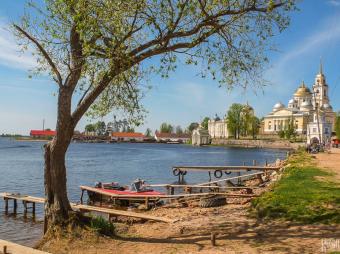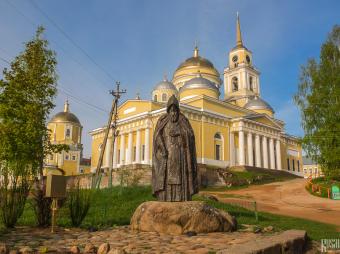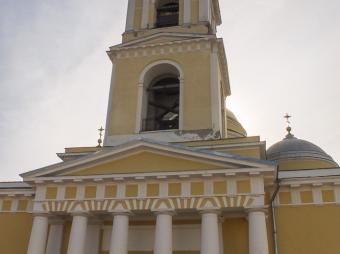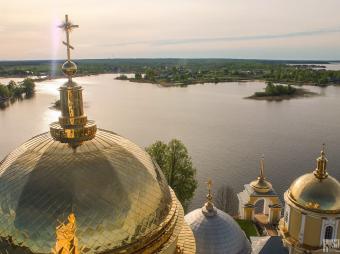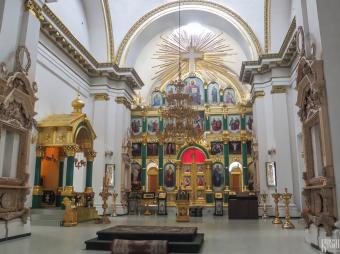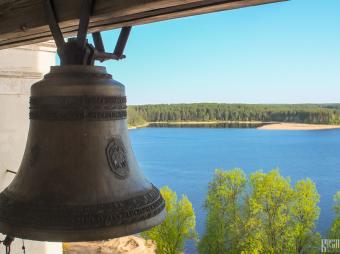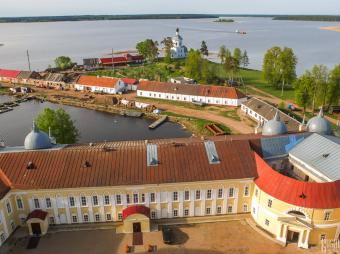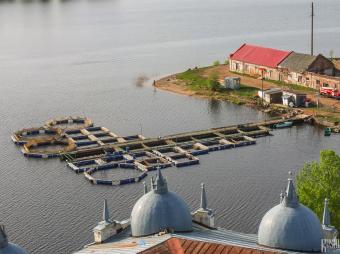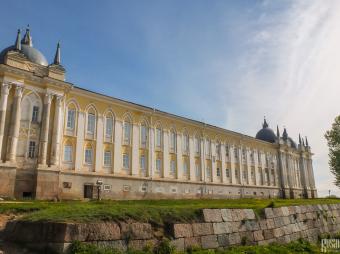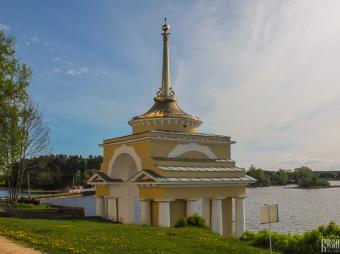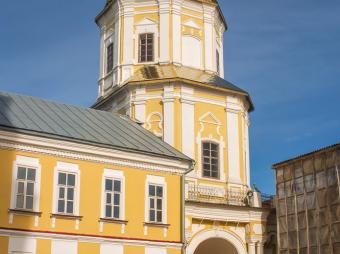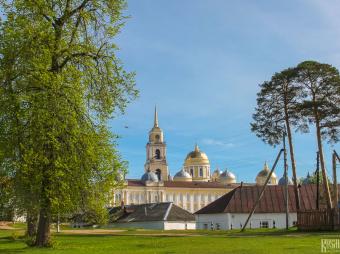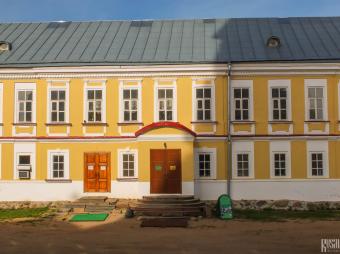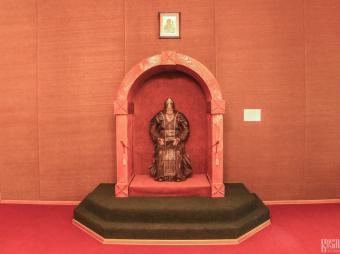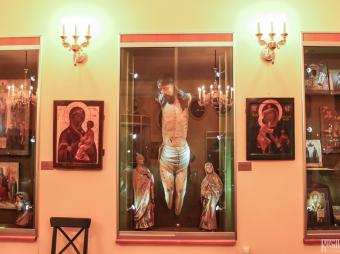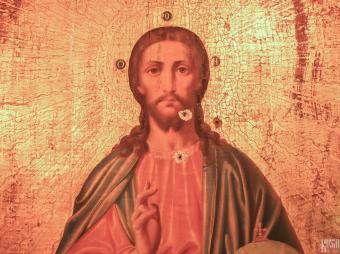Settlement of Svetlitsa
Nilo-Stolobenskaya Hermitage
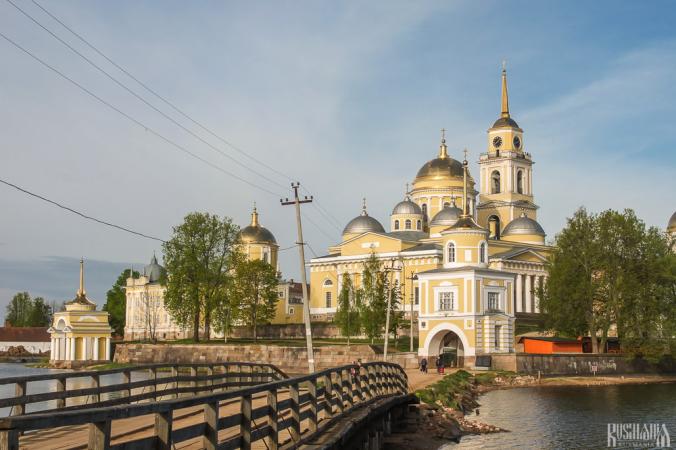
The beginning of the Nilo-Stolobenskaya Hermitage are connected with a 16th century monk call Nil who has since been canonised as St Nilus (Nil) of Stolobny. In 1515 Nil quit his monastery to live a life in prayer in a remote forest surviving on grass and acorns. According to legend when robbers once came to rob him, Nil simply approached them with an icon and the robbers are said to have run off in fear. Nil's reputation as a greatly spiritual man grew and more and more people came to visit him. This in turn forced Nil to move on to a more remote spot in 1528, when he settled on the island of Stolobny in Lake Seliger. In 1555 Nil died and in 1594 Patriarch Job established a community of monks on the island which was named the Nilo-Stolobenskaya Hermitage in honour of Nil. Sometimes also just called the Nilova Hermitage.
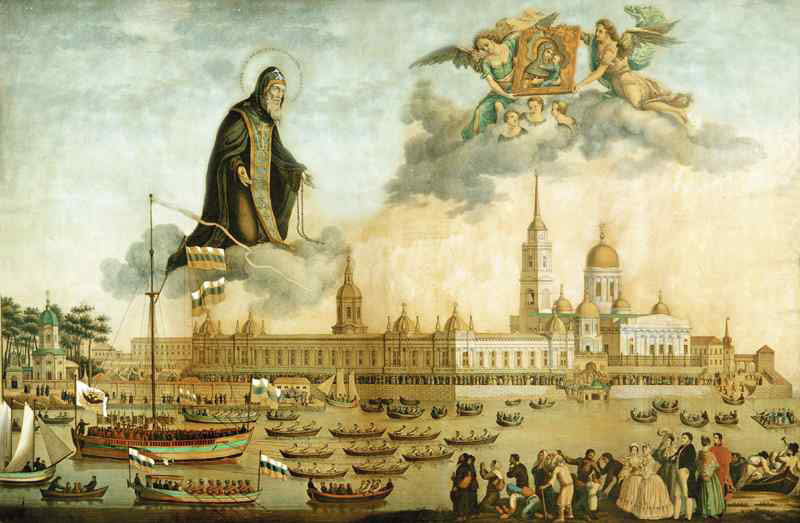
The hermitage grew into one of the most revered monasteries in Russia, receiving over 1000 pilgrims a year, including Emperor Alexander I in 1820. In 1858 a new embankment was built to accommodate the boats bringing pilgrims to the island. However this all ended in 1919 when the monastery's treasures were looted and the remains of St Nilus were opened in the hope of finding gold there. The final blow came in 1927 when the monastery was closed. Over the next decades the former monastery's buildings were used to hold a children's prison camp, a Polish POW camp, a military hospital, a children's prison camp once more, an old-age persons home and then finally as a tour base. Only in 1990 was the complex reopened as a monastery and in 1995 the relics of St Nilus were returned there. Much restoration work has since been performed and during his visit in 2013 President Putin promised more funds would be allocated to return the monastery to its former glory.
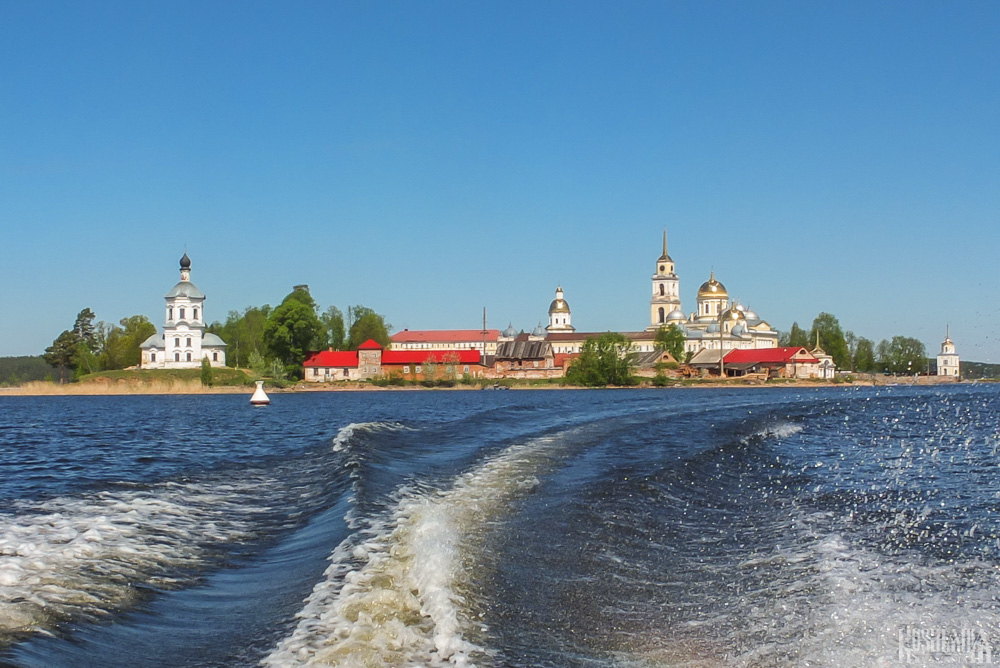
You can get to the monastery by taking a bus to Svetitsa from Ostashkov's Bus Station or a suburban train from Ostahkov's Railway Station, however neither of these run frequently. Otherwise you can take a taxi or a private boat from Ostashkov. A trip across Lake Seliger by private boat should cost around RUB 1500 (as of 2014).
St Nilus of Stolobny Monument
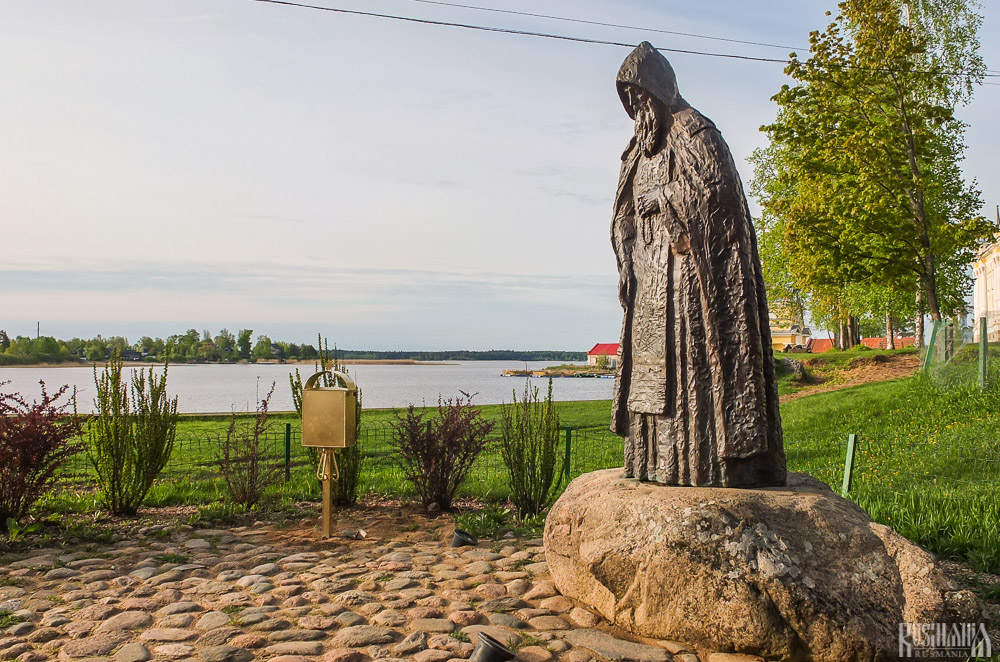
Just beyond the main entrance into the monastery which is formed by the mid-19th century Svetlitskaya Tower is a statue of the monastery's founder St Nilus (Nil) of Stolobny. Nilus became famed for taking a vow never to lay down to sleep. For forty years he sat upright with two crutches under his arms supporting him.
Transfiguration of the Lord Cathedral
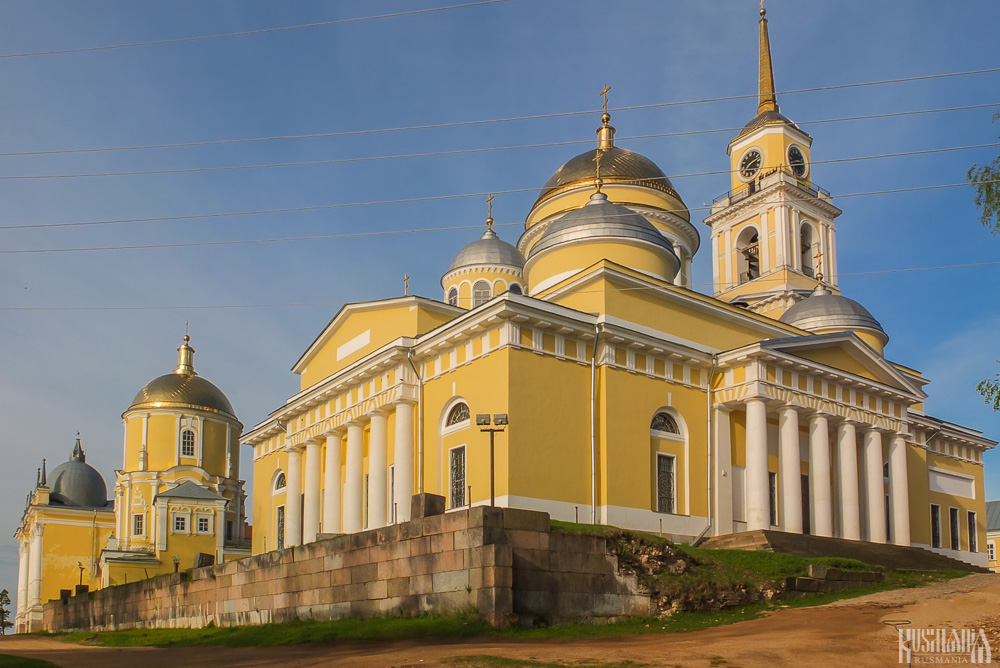
The monastery's main cathedral is the massive Transfiguration of the Lord Cathedral and there has been a version of this cathedral in the monastery since at least 1671. The current version of the cathedral was built between 1821 and 1833 according to a design which was originally considered for St Isaac's Cathedral in St Petersburg. The large cubic structure is topped with a large central golden dome and five smaller ones. Its facades are decorated with columns and there is a bell tower over the main entrance. For a small fee you can climb to the top of the tower to enjoy stunning views of Lake Seliger. The relics of St Nilus were returned to the cathedral in 1995.
St Nilus of Stolobny's Gate-Church
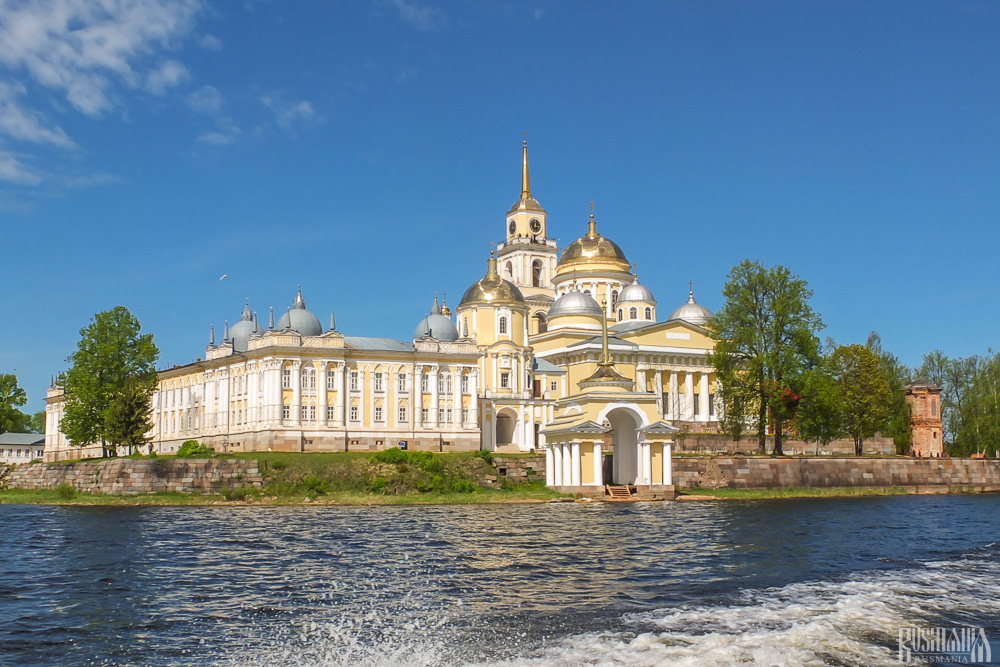
To the south of the cathedral is the St Nilus of Stolobny's Gate-Church which forms the eastern entrance into the monastery, just behind what is known as the Archbishop's Pier. The church was built in the baroque style between 1751 and 1755. Built onto the church is the pretty building of the monk's quarters.
Ss Peter and Paul's Gate-Church and All Saint's Church
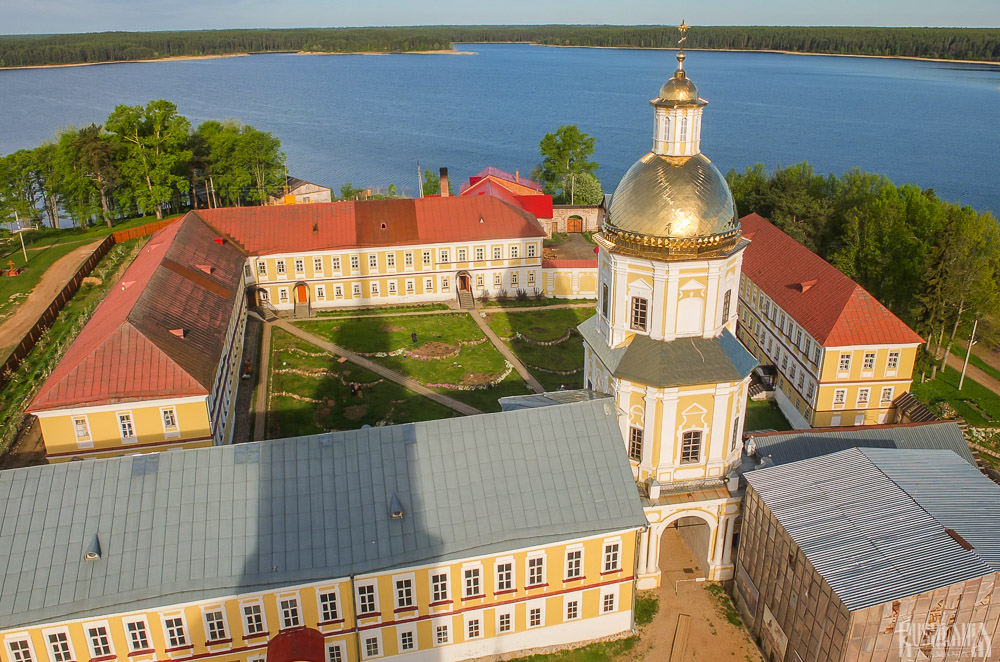
The western entrance into the main section of the monastery is formed by the Ss Peter and Paul's Gate-Church. The baroque style tower church was built between 1760 and 1764. Just next to Ss Peter and Paul's Gate-Church is the All Saints' Church which dates from 1699 - making it one of the oldest structures in the monastery. However, as of 2014, the church stands in ruins and restoration work has only just begun. Next to this church is the monastery's Refectory Chamber.
Monastery Museum
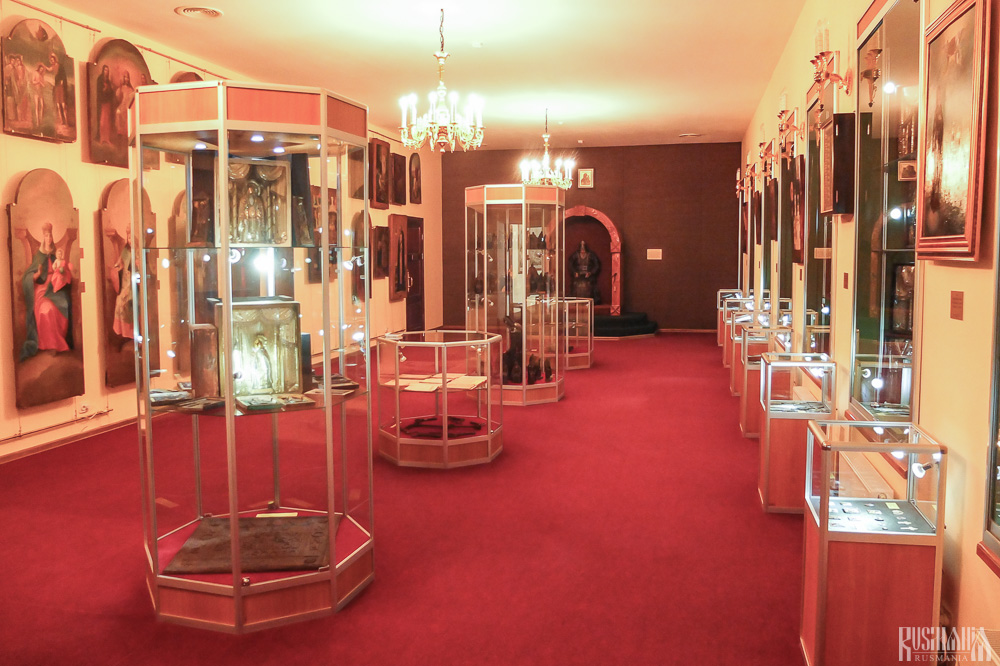
The Abbot's Chambers which are built onto Ss Peter and Paul's Gate-Church are now used to hold the Monastery's Museum. The museum's halls detail the life of the monastery and displays many of its treasures which were have since been returned to the monastery after they were removed by the Bolsheviks. Of special note is a 17th-century miracle-working carved wooden statue of St Nilus - of which countless smaller wooden engravings have been made for pilgrims. Parts of the iconostasis of the destroyed St John the Baptist Church are also displayed here, complete with an icon which bears bullet holes after being shot at by the Bolsheviks. The museum also has information and photos regarding the monastery's time as a Polish POW camp.
Foundations of St John the Baptist's Church
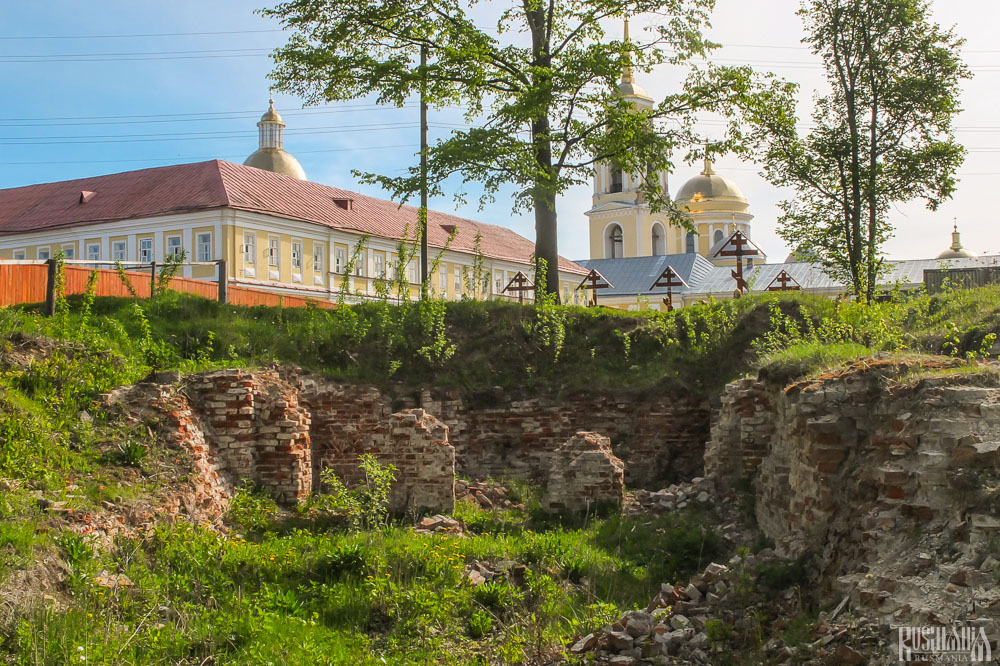
Just outside the main section of the monastery are the foundations of the monastery's Ss Peter and Paul's Church which was blown up by the Soviets in 1939. It was built in 1764 on the site where the cave in which St Nilus lived was located and was one of the monastery's most beautiful churches. The foundations were uncovered during an archaeological dig, which also turned up several church artefacts - now on display in the monastery's museum. As of 2014 there are plans to rebuilt the church.
Exaltation of the Cross Church
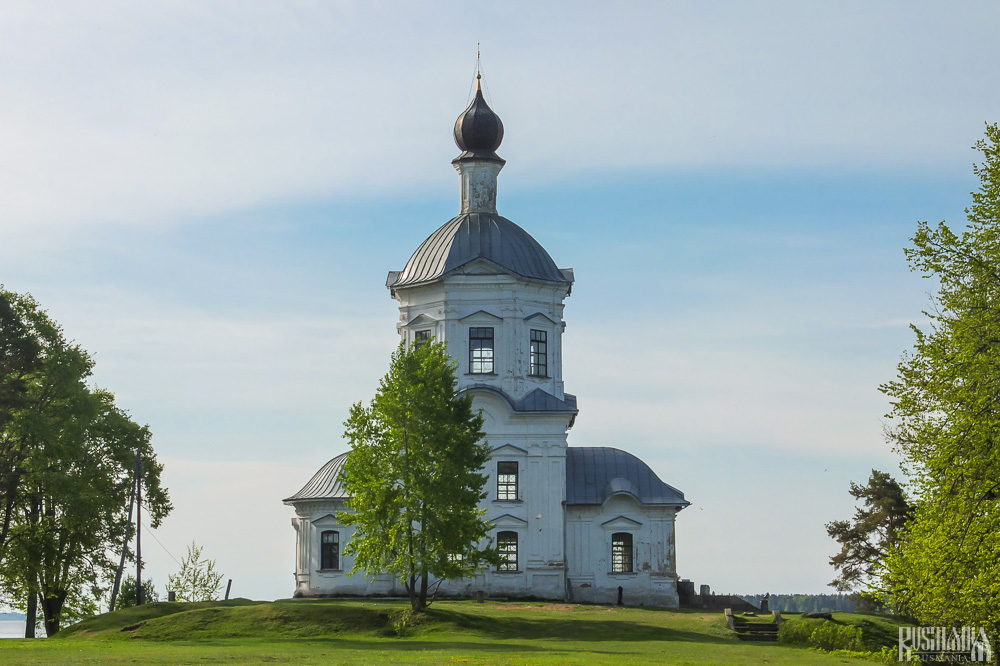
Much of the southern part of the island of Stolobny is occupied with auxiliary buildings of the monastery, including a small fish farm. However on the very southern tip of the island is another church - the Exaltation of the Cross Church. The pretty baroque-style octagon-on-cube structure church was built between 1784 and 1788.
| Location | Stolobny Island, near the settlement (posyolok) of Svetlitsa |
|---|---|
| Website | http://nilostolobenskaja-pustyn.ru |

 History
History